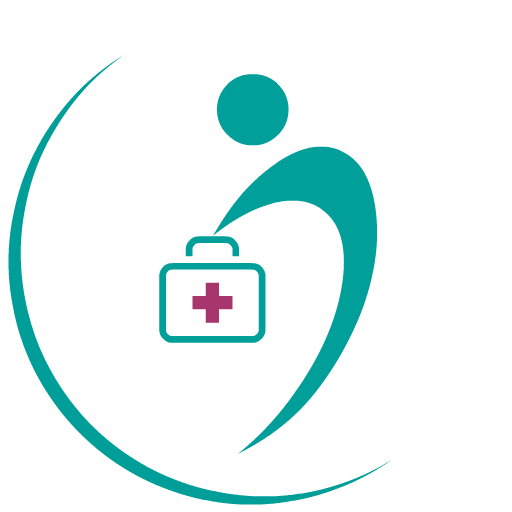Pemphigus vulgaris is a rare autoimmune disorder characterized by the formation of blisters on the skin and mucous membranes.
It is considered the most common form of pemphigus and can have a significant impact on an individual's quality of life. In this article, we will explore the causes, symptoms, diagnosis, treatment options, complications, and coping strategies associated with pemphigus vulgaris. We will also discuss preventive measures, recent advancements in research, and address common questions related to this condition.
Introduction
Pemphigus vulgaris is an autoimmune condition that results in the production of autoantibodies targeting desmoglein proteins, which play a crucial role in maintaining the integrity of skin and mucous membranes. This immune response leads to the detachment of cells, causing the formation of blisters. Pemphigus vulgaris is relatively rare, affecting approximately 0.1 to 0.5 individuals per 100,000 population worldwide.
Definition of Pemphigus Vulgaris
Pemphigus vulgaris is a chronic autoimmune blistering disorder characterized by the presence of painful, fragile, and easily ruptured blisters on the skin and mucous membranes. These blisters can occur anywhere on the body but are commonly found in the mouth, scalp, face, chest, and groin area.
Prevalence and Incidence
Pemphigus vulgaris is more prevalent in certain populations, including individuals of Jewish, Mediterranean, and Indian descent. It typically manifests in adults between the ages of 40 and 60, although it can occur at any age. The incidence of pemphigus vulgaris varies across different regions and ethnic groups.
Causes and Triggers
The exact cause of pemphigus vulgaris is not fully understood. However, it is believed that pemphigus vulgaris is caused by a combination of genetic and environmental factors. Certain genetic variations may predispose individuals to develop an autoimmune response against desmoglein proteins. Environmental triggers, such as certain medications, infections, or physical trauma, can activate the immune system and lead to the development of pemphigus vulgaris in susceptible individuals.
Impact on Quality of Life
Pemphigus vulgaris can significantly impact an individual's quality of life. The painful blisters and erosions can make it difficult to perform daily activities, such as eating, speaking, and even basic hygiene practices. The chronic nature of the condition and the potential for long-term complications can also lead to emotional distress, anxiety, and depression. It is important for individuals with pemphigus vulgaris to receive comprehensive care and support to manage the physical and emotional challenges associated with the condition.
Signs and Symptoms
Pemphigus vulgaris presents with characteristic signs and symptoms that primarily affect the skin and mucous membranes.
A. Blister Formation and Characteristics
The hallmark of pemphigus vulgaris is the formation of fragile blisters that are prone to rupture. These blisters often begin as small, fluid-filled lesions that can quickly spread and merge, resulting in larger, irregularly shaped blisters. The blisters are typically painful and can cause intense itching or burning sensations. When the blisters rupture, they leave behind raw, denuded areas that are susceptible to secondary infections.
B. Oral Manifestations
Pemphigus vulgaris commonly affects the oral mucosa, leading to significant oral manifestations. Patients may experience painful blisters and erosions in the mouth, tongue, gums, and throat. These oral lesions can make eating and swallowing difficult and can significantly impact an individual's nutritional intake. Additionally, the presence of oral lesions can cause discomfort and affect speech.
C. Skin Involvement and Distribution
While pemphigus vulgaris primarily affects the mucous membranes, it can also involve the skin. The skin lesions are often widespread and can appear on the scalp, face, chest, abdomen, back, and genital area. The blisters may be localized or generalized, and their distribution can vary among individuals. The lesions on the skin can be painful, itchy, and prone to infection, further complicating the management of the condition.
Diagnosis
The diagnosis of pemphigus vulgaris involves a combination of clinical evaluation, histopathological examination, and immunofluorescence studies.
A. Clinical Evaluation
During a clinical evaluation, a dermatologist or an oral specialist will examine the patient's skin and mucous membranes for characteristic signs of pemphigus vulgaris. The presence of widespread blisters, erosions, and the distribution pattern of the lesions are important diagnostic clues. The clinician will also inquire about the patient's medical history and perform a physical examination to rule out other possible conditions.
B. Histopathological Examination
A skin or oral biopsy is often performed to confirm the diagnosis of pemphigus vulgaris. A small sample of affected tissue is removed and examined under a microscope. Histopathological examination reveals characteristic changes, such as intraepithelial blistering, acantholysis (loss of cell-to-cell adhesion), and the presence of immune cells. These findings help differentiate pemphigus vulgaris from other blistering disorders.
C. Immunofluorescence Studies
Immunofluorescence studies involve examining a tissue sample using specific antibodies that can detect the presence of autoantibodies. In pemphigus vulgaris, immunofluorescence studies reveal a characteristic pattern known as "intercellular IgG deposition," which indicates the presence of autoantibodies between skin or mucous membrane cells. This finding is essential in confirming the diagnosis of pemphigus vulgaris.
D. Differential Diagnosis
Distinguishing pemphigus vulgaris from other blistering disorders can be challenging due to overlapping clinical features. Therefore, it is crucial to consider other conditions, such as bullous pemphigoid, mucous membrane pemphigoid, and erythema multiforme, during the diagnostic process. Additional tests, including blood work and further immunological studies, may be performed to differentiate pemphigus vulgaris from these conditions.
Treatment Options
The treatment of pemphigus vulgaris aims to control disease activity, promote healing of lesions, and prevent complications. A multidisciplinary approach involving dermatologists, oral specialists, and other healthcare professionals is often necessary.
A. Systemic Corticosteroids
Systemic corticosteroids, such as prednisone, are the mainstay of treatment for pemphigus vulgaris. These medications work by suppressing the immune system and reducing inflammation. High doses of corticosteroids are usually initiated during the acute phase of the disease to achieve disease control. The dosage is then gradually tapered down to the lowest effective dose to minimize side effects.
B. Immunosuppressive Drugs
In addition to corticosteroids, immunosuppressive drugs may be prescribed to further suppress the immune response. Medications such as azathioprine, mycophenolate mofetil, methotrexate, and cyclophosphamide are commonly used as steroid-sparing agents. These medications help reduce the dosage and duration of corticosteroid treatment, minimizing the associated side effects.
C. Adjuvant Therapies
Adjuvant therapies, such as topical corticosteroids, intralesional corticosteroid injections, and wound dressings, can be used to manage localized lesions and promote healing. Pain management strategies, including the use of topical anesthetics or analgesics, may also be employed to alleviate discomfort. Additionally, antibiotics or antifungal medications may be prescribed to prevent or treat secondary infections.
D. Monitoring and Follow-Up
Regular monitoring and follow-up visits are crucial in managing pemphigus vulgaris. Close monitoring allows healthcare professionals to assess treatment response, adjust medication dosages, and address any emerging complications. Routine blood tests, including complete blood count, liver function tests, and kidney function tests, may be performed to monitor for medication-related side effects.
Complications and Prognosis
Pemphigus vulgaris can lead to various complications and long-term effects, which can significantly impact prognosis and quality of life.
A. Potential Complications
Secondary infections: The open blisters and erosions can serve as entry points for bacteria and fungi, leading to infections that require prompt treatment.
Fluid and electrolyte imbalances: Extensive blistering and oozing can result in fluid loss and electrolyte disturbances, requiring appropriate management.
Nutritional deficiencies: Oral lesions can affect the ability to eat and swallow, potentially leading to malnutrition if not addressed.
Psychological impact: The chronic nature of pemphigus vulgaris, along with physical discomfort and appearance changes, can cause emotional distress and affect mental well-being.
B. Long-Term Effects
Prolonged use of corticosteroids and immunosuppressive drugs may lead to various long-term effects, including:
Adrenal gland suppression: Corticosteroids can suppress the function of the adrenal glands, which produce important hormones.
Osteoporosis: Prolonged corticosteroid use can contribute to bone loss, increasing the risk of osteoporosis and fractures.
Immunosuppression: The use of immunosuppressive drugs can weaken the immune system, making individuals more susceptible to infections.
Increased risk of certain cancers: Long-term immunosuppressive therapy may slightly increase the risk of developing certain types of cancers.
It is important for individuals with pemphigus vulgaris to work closely with their healthcare team to monitor and manage these potential complications and long-term effects.
Coping with Pemphigus Vulgaris
Managing pemphigus vulgaris requires a comprehensive approach that goes beyond medical treatment. Here are some strategies to help cope with the condition:
A. Importance of Self-Care
Self-care plays a crucial role in managing pemphigus vulgaris. This includes maintaining good oral hygiene, following prescribed treatment regimens, avoiding triggers that can exacerbate symptoms, and taking steps to prevent infections. It is essential to communicate openly with healthcare providers and adhere to recommended self-care practices.
B. Psychological Support
Living with a chronic condition like pemphigus vulgaris can take an emotional toll. Seeking psychological support through therapy or counseling can help individuals cope with the challenges, anxiety, and emotional distress associated with the condition. Support from friends, family, and support groups can also provide a valuable source of understanding and encouragement.
C. Support Groups and Resources
Joining support groups or connecting with others who have pemphigus vulgaris can provide a sense of community and shared experiences. These groups offer a platform to exchange information, seek advice, and find support from individuals who understand the daily challenges of living with the condition. Additionally, online resources and reputable websites dedicated to pemphigus vulgaris can provide valuable information and educational materials.
Prevention and Management Strategies
While pemphigus vulgaris cannot be completely prevented, certain strategies can help manage the condition and minimize flare-ups:
A. Trigger Avoidance
Identifying and avoiding triggers that can worsen symptoms or trigger flare-ups is crucial. These triggers can vary among individuals but may include certain medications, physical trauma, stress, or specific foods. Keeping a symptom diary can help identify potential triggers and guide the development of personalized management strategies.
B. Oral Hygiene Practices
Maintaining good oral hygiene is essential for individuals with pemphigus vulgaris, as oral lesions can be particularly challenging. Gentle toothbrushing with a soft-bristle brush, using non-irritating toothpaste, and regular dental check-ups can help prevent oral infections and maintain oral health.
C. Regular Medical Check-ups
Regular follow-up appointments with healthcare providers are necessary to monitor the condition's progression, adjust treatment plans if needed, and address any emerging complications. Staying proactive and informed about the latest research and advancements can empower individuals to actively participate in their healthcare journey.
Research and Advancements
Ongoing research and advancements in the understanding and treatment of pemphigus vulgaris offer hope for improved management and outcomes. Recent studies have focused on exploring targeted therapies, including biologic agents and novel immunomodulatory drugs, which show promise in reducing the reliance on high-dose corticosteroids and minimizing side effects. Additionally, advancements in diagnostic techniques and biomarker identification may lead to earlier diagnosis and personalized treatment approaches in the future.
Conclusion
Pemphigus vulgaris is a rare autoimmune disorder characterized by the formation of blisters on the skin and mucous membranes. It can significantly impact an individual's quality of life, requiring a multidisciplinary approach for management. Timely diagnosis, appropriate treatment, self-care practices, and psychological support are vital in coping with the physical and emotional challenges associated with pemphigus vulgaris. Ongoing research and advancements in treatment options provide hope for improved outcomes and a better quality of life for individuals affected by this condition.
FAQs (Frequently Asked Questions)
Can pemphigus vulgaris be cured?
While there is no definitive cure for pemphigus vulgaris, it can be effectively managed with appropriate treatment and self-care strategies.
Are there any natural remedies for pemphigus vulgaris?
Natural remedies alone are not sufficient to manage pemphigus vulgaris. It is important to consult with healthcare professionals for appropriate medical treatment.
Can stress worsen symptoms of pemphigus vulgaris?
Stress can potentially exacerbate symptoms or trigger flare-ups in some individuals with pemphigus vulgaris. Stress management techniques may be beneficial.
Are there any dietary restrictions for pemphigus vulgaris?
There are no specific dietary restrictions for pemphigus vulgaris. However, it is advisable to maintain a balanced diet and avoid any known trigger foods.
Can pemphigus vulgaris affect children?
While pemphigus vulgaris is more common in adults, it can also occur in children, although it is rare. Pediatric cases may require specialized care and management.
Blogs
Stay connected to health experts and read what they have to say via DocSmart.
Please sign up to create your own blog





